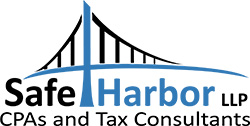2011 year end tax planning for individuals lacks some of the drama of recent years but can be no less rewarding. Last year, individual taxpayers were facing looming tax increases as the calendar changed from 2010 to 2011; particularly, increased tax rates on wages, interest and other ordinary income, and higher rates on long-term capital gains and qualified dividends.
Thanks to legislation enacted at the end of 2010, tax rates are stable for 2011 and 2012, although the uncertainty will return as 2013 approaches, as political pressure in Washington builds to do something quickly for the economy. Ordinary income tax rates for individuals currently are 10, 15, 25, 28, 33 and 35 percent; capital gains rates are zero and 15 percent.
President Obama has proposed to preserve these tax rates for taxpayers with income below $200,000 (individuals) and $250,000 (married couples filing jointly) and to raise the rates for taxpayers in these higher-income brackets. If Congress is gridlocked and takes no action, everybody’s rates will rise, but again, not until 2013.
Expiring tax breaks
Unfortunately, not all is quiet on the tax front despite no dramatic rate changes until 2013. There are some specific tax provisions that will terminate at the end of 2011, unless Congress and the President agree to extend them. These include the tuition and fees above-the-line deduction for high education expenses, which can be as high as $4,000. Another expiring provision is the deduction for mortgage insurance premiums, which covers premiums paid for qualified mortgage insurance.
Several other benefits (“extenders”) are also scheduled to expire after 2011:
- The state and local sales tax deduction;
- The classroom expense deduction for teachers;
- Nonbusiness energy credits;
- The exclusion for distributions of up to $100,000 from an IRA to charity;
- A higher deduction limit for charitable contributions of appreciated property for conservation purposes.
Retirement accounts
An old standby that makes sense from year-to-year is maximizing contributions to an IRA. The contribution is deductible up to $5,000 ($6,000 for taxpayers over 50), depending on some specific taxpayer income levels and circumstances. Taxpayers in a 401(k) plan can reduce their income by contributing to their employer plan, for which the limit in 2011 is $16,500.
In 2010, it was particularly important to consider whether to convert a traditional IRA to a Roth IRA, because the income realized on conversion could be recognized over two years. While a conversion continues to be worthwhile to consider (because distributions from a Roth IRA are not taxable), there are no longer any special break to defer a portion of the income from the conversion.
Alternative minimum tax
The AMT has been “patched” for 2011. The exemptions have been temporarily increased from the normal statutory levels to the “patched” levels:
- From $33,750 to $48,450 for single individuals;
- From $45,000 to $74,450 for married couples filing jointly and surviving spouses; and
- From $22,500 to $37,335 for married couples filing separately.
The amounts return to the “normal levels” of $33,750/$45,000/$22,500, respectively, in 2012 unless Congress takes action to maintain the patch. Elimination of the AMT is a goal of long-term tax reform, but the loss of revenue has been considered too high in the past. Without the “patch,” the Congressional Budget Office estimates that an additional 20 million middle-class taxpayers would suddenly become subject to an AMT once designed only for millionaires.
While planning for the AMT is difficult, taxpayers may want to consider realizing AMT income, such as capital gains, in 2011, when the patch is higher, rather than in 2012.
Conclusion
Taxpayers can take advantage of 2011 provisions to realize last-minute tax benefits. Some of these benefits may not be available in 2012. It is worthwhile to look at these planning opportunities as part of an overall year-year financial strategy.
If and only to the extent that this publication contains contributions from tax professionals who are subject to the rules of professional conduct set forth in Circular 230, as promulgated by the United States Department of the Treasury, the publisher, on behalf of those contributors, hereby states that any U.S. federal tax advice that is contained in such contributions was not intended or written to be used by any taxpayer for the purpose of avoiding penalties that may be imposed on the taxpayer by the Internal Revenue Service, and it cannot be used by any taxpayer for such purpose.

